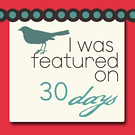It wasn’t easy, and there is surprisingly little on the interweb on how to go about it. I mostly made it up as I went along, and I’m sure there’ll be a few of you out there who have made a few brushes in your time who’ll be shaking your heads!
I used squirrel hair for the brushes which I bought as dried tails from a chap who runs a nature reserve. It sounds a bit gory and I’m no fur wearer, but grey squirrels can be a menace and a cull is sometimes necessary.
Here’s what I did:

First I tried my hand at flat brushes. I cut the hair and dampened it to keep it in place. Then I laid it out on a piece of plastic and built up layers until it was as thick and as wide as I needed.

I then brushed a lot of wood glue onto the bottom 1/4-1/2” of the stack of hair (working it well in) and sandwiched it between two pieces of plastic. I left the brush-heads overnight with the glued part pressed between books to keep it flat.

I then went and gathered up some handles. I chose the longest, straightest branches I could find and cut them approximately 10” long. The red ones are dogwood, and I think some of the others are beech. It doesn’t really matter though, I chose them for their almost-straightness, thickness and interestingness.

I left the bark on the dogwood because it’s such a brilliant colour, and really I could have left it on them all, but I decided to strip the bark from the others.
I then split the top one inch of each stick. The easiest way is to hold a knife across the centre of the top of the stick and slowly (carefully) hammer it into the wood.

In order to insert the brush-head, you need to hold the split open. I did this by inserting a pin near the top and pushing it down until the split was as open as I needed.

You see?

Before I inserted the bristles I added a big dollop of wood glue (this is an attempt at ‘taking no chances’).

I pushed the bristles into the split until the glued part was well covered and removed the pin. With that out of the way, the split closes and the bristles are grabbed.

Before the glue had set, I glued a small piece of pink leather around the split…

… and tied it very tightly with a scrap of embroidery thread.

Then I had a go at round brushes. These were much harder, but similar, to make. I laid down dampened hair the same as before, but instead of keeping it flat I rolled it up and tied it very tightly with cotton to keep it tight and round. I then dipped the tied end in wood glue and worked it into the hair. I also tried one with feathers, just to see if it would work.
I hung them up overnight to dry.

In the morning the glued end was very hard. I trimmed it flat with a scalpel and used Araldite to glue the brush-heads directly to the sticks, making sure to spread the glue over the sides of the brush and the stick for security. I stuck them in the soil of the nearest plant pot to keep them upright while they dried, then wrapped leather around the join and tied them with embroidery thread as before.

This one was made the same way but with lots of handles all bound together.
They look nice and pretty, but will they work? The first ones I made were also pretty messy, but they got better – who’d have thought loose tufts of hair would be a hard material to work with? :)
I know I have some horse hair and sheep’s wool somewhere so I might try those too.
If anyone makes some, I’d love to see!
Beccy



















Thank you for sharing! I can't wait to make one or two or three..
ReplyDeleteI don't feel well
ReplyDeleteIsn't culling in a nature reserve sort of...?
ReplyDeleteLovely brushes, though :) A beautiful gift.
Will the wood glue be water/glaze proof?
thanks, I just buried a squirrel that my cat joykilled. Now I wish I had saved the tail. I also heard that human baby hair is highly prized for paintbrushes.
ReplyDelete